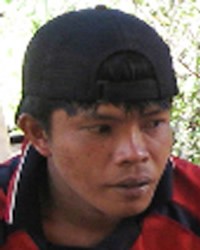Moronene in Indonesia

Photo Source:
Copyrighted © 2026
Anonymous All rights reserved. Used with permission |
Send Joshua Project a map of this people group.
|
| People Name: | Moronene |
| Country: | Indonesia |
| 10/40 Window: | Yes |
| Population: | 50,000 |
| World Population: | 50,000 |
| Primary Language: | Moronene |
| Primary Religion: | Islam |
| Christian Adherents: | 1.91 % |
| Evangelicals: | 1.82 % |
| Scripture: | New Testament |
| Ministry Resources: | Yes |
| Jesus Film: | No |
| Audio Recordings: | Yes |
| People Cluster: | Bungku-Bajau |
| Affinity Bloc: | Malay Peoples |
| Progress Level: |
|
Introduction / History
The Moronene are part of the Eastern branch of the Bungku Tolaki microgroup which originated in Central Sulawesi. All the ethnic groups in Sulawesi are descended and derived from people who came from the Philippines several thousand years ago. The Moronene live in the districts of Kabaena, East Kabaena, Rumbia, East Poleang, Rarowatu and Watubangga in the Bombana regency and Watubangga in the Kolaka regency. In the five last districts mentioned, they live together with the Bugis. The Moronene language is part of a larger linguistic grouping called the Eastern Bungku-Tolaki subfamily which also includes the Koroni, Bungku, Taloki, Bahonsuai, Mori, Kulisusu, Padoe, Wawonii, Tomadino, Kodeoha, Rahambuu, Tolaki and Waru languages.
What Are Their Lives Like?
The Moronene area is known as the Negeri Dewi Padi (the land of the rice goddess). This name is based on a myth that depicts the Moronene area as a place possessing agricultural fertility that brings prosperity to those inhabitants who are creative and want to work hard. However, if the Moronene community (both on the mainland and on Kabaena Island) continues to depend on the generosity of nature and doesn't accept social change, they may find their socio-economic status in decline. The Moronene community has always been known for highly valuing peace, patience and simplicity. As a result, whenever they are engaged in conflict with another party they will always choose to concede, thus allowing them to remain in the same area. The following examples show more about the Moronene social life, economy and everyday culture: (1) They live very simply and are happy to live in a small group. (2) Their houses are mostly made from bamboo obtained near their gardens. (3) If they must go look for a new place to live in order to avoid conflict in their original location, they build their new homes in a different location to avoid more problems. (4) They generally like to decorate their festivals with bright colors. Although research has not yet proven this, it appears the above cultural traits are passed on from generation to generation, forming the basis of Moronene politics, economy, social life and customs. In the Rumbia area, one Moronene community who live in an area designated as a national park have not been treated well by the government. They have been evicted from their homes because their land is now protected forest. This has caused social conflict between the Moronene community and the government. However, they are not without outside assistance, as they have been supported by community development organizations and others. In 2007 gold was discovered Bombana Regency and a gold rush ensued. This caused an influx of many outsiders into the Moronene area. While many Moronene went to the goldfields to search for gold, much of the wealth went to outsiders and the gold rush caused a number of social problems.
What Are Their Beliefs?
Sunni Islam has been the dominant religion since the 1600s. However, traditional beliefs are still very important, especially the belief in evil spirits. None of the Moronene can now be classified as isolated groups. They all live in villages, or in farms on the outskirts of villages. Some have animistic beliefs mixed with their Islamic beliefs, but all of them identify themselves as being Muslim or Christian.
What Are Their Needs?
Better education and health facilities are the primary needs of the Moronene. They also need training in order to increase the productivity of their land and their standard of living so they can compete with the transmigrants in the area.
Prayer Points
Pray for Moronene elders and imams to have dreams of the risen and victorious Christ.
Pray for loving and dedicated workers to go to them.
Pray that soon Moronene disciples will be making more disciples.